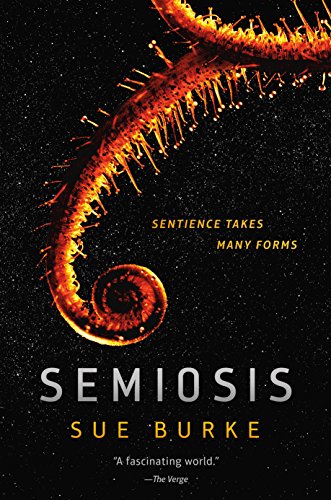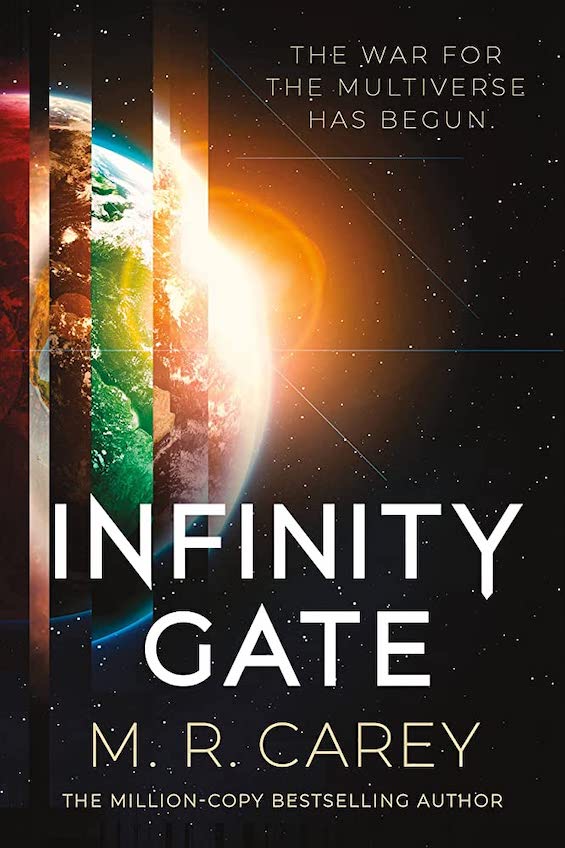
Estimated reading time: 4 minutes
Why is it, do you think, that animals are capable of thought, and plants aren’t? Or are they? Certainly, many aspects of plant behavior suggest conscious action. And at least one scientist, Daniel Chamovitz, director of the Manna Center for Plant Biosciences at Tel Aviv University, “argues [that a plant] can see, smell and feel. It can mount a defense when under siege, and warn its neighbors of trouble on the way. A plant can even be said to have a memory.” And whether any of this means that plants can think is the subject of Chamovitz’s book, What a Plant Knows. The book was reviewed in 2012 in Scientific American. Now, author and translator Sue Burke takes the argument several steps further in her unique first contact story, Semiosis.
The basis of Burke’s portrayal of highly intelligent plants is the setting on a world that human colonists have dubbed Pax. Revolving around a nearby star that requires a 23-year journey, Pax is older than Earth by a billion years, and the life it supports has been evolving much longer. There is intelligent animal life but none that comes remotely close to that of homo sapiens. It’s the plants that compete for resources with the human settlers. And a species of what the colonists call bamboo is the most intelligent of all. Burke’s patient story of how the two species learn to communicate is fascinating. It’s an entirely new wrinkle on first contact.
Don’t expect the plants on Pax to be monsters out of Alien. Burke’s tale is far more sophisticated than that. And her portrayal of how the plants fight among themselves and against the human colonists is fascinating.
Semiosis is divided into seven chapters. Burke first sketches out the history of the human colony during its first three generations. The remaining four chapters of the story, which occupy more than half the book, are set during the 106th and 107th years of the colony.
Semiosis (Semiosis Duology #1) by Sue Burke (2018) 326 pages ★★★★★
A long buildup to this unique first contact story
We know from the outset that there will be conflict on Pax despite the fact that the colonists have declared themselves to be pacifists. “The war had begun long before we arrived,” Burke writes at the outset, “because war was their way of life.” Early on, it has become clear to them that one of the native plants dominates the area where they have established their settlement. And they know it is their enemy.
The action in Semiosis is fast-paced, and Burke’s repeated references to biological science appear to be sound. Given the originality of the concept on which the novel is based, this could have been an outstanding effort. It is, truly, a unique first contact story. However, there are several problems:
- First, only 50 colonists had shipped off to Pax, and only 31 survived the journey and the first days there; that’s a number far too small to establish a genetically viable civilization.
- Second, Burke’s characters aren’t fully fleshed out. Even in the later chapters, when the focus is all on the events of a single two-year period, it’s difficult to get a handle on even the central figures in the story.
- Third, the book ends inconclusively. It’s almost as though she had written a much longer book and decided at the last minute to divide it in two. I guess I’ll have to read the sequel to learn how the story turns out.
For related reading
I’ve reviewed the sequel to this book, Interference, at Humans, intelligent plants, brilliant insects, and that’s not all!
This is one of The 7 best techno-thrillers.
You’ll find this book in good company on my posts, The five best First Contact novels, 10 great medical and biological thrillers, and Pandemic got you down? Read these books!
For more good reading, check out:
- These novels won both Hugo and Nebula Awards
- The ultimate guide to the all-time best science fiction novels
- 10 top science fiction novels
- The top 10 dystopian novels
- Ten new science fiction authors worth reading now
And you can always find my most popular reviews, and the most recent ones, on the Home Page.



























